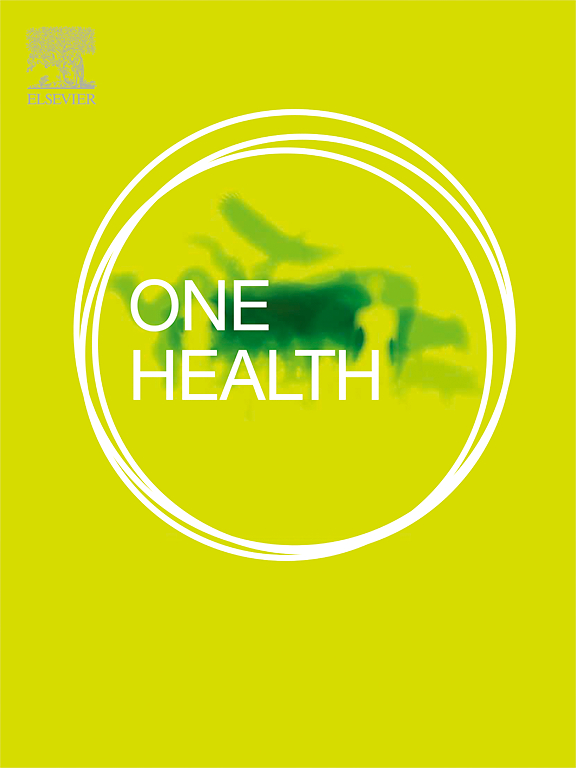地理因素和空袭警报对乌克兰钩端螺旋体病流行病学的影响(2018-2023年)
IF 4.1
2区 医学
Q1 INFECTIOUS DISEASES
引用次数: 0
摘要
钩端螺旋体病是由钩端螺旋体引起的一种广泛存在的人畜共患疾病,在全世界每年影响约100万人,造成约58 000人死亡。本研究考察了2018 - 2023年乌克兰钩端螺旋体病的流行病学,重点研究了天气和地理因素对疾病传播的影响。分析了来自乌克兰疾病预防和控制中心、乌克兰水文气象中心和乌克兰国家水资源局的数据。这个国家被分为五个地区:北部、东部、中部、南部和西部。将钩端螺旋体病通报率(NR)分为低、中、高3个等级进行可视化分析,而非定量分析。Zakarpattia、Ivano-Frankivsk、Khmelnytskyi、Mykolaiv和Kherson地区的NR最高,其中Zakarpattia地区的NR最高。我们分析了各种天气参数(如年平均气温、降水量、降水量≥1mm的天数和相对湿度)是否与钩端螺旋体病的通报率(NR)相关,但未发现显著相关性。但河网密度与NR呈显著正相关(Kendall’s rank correlation, r = 0.65, p = 0.0005),表明地理因素可能在钩端螺旋体传播中起重要作用。此外,我们发现每月空袭警报频率与2023年钩端螺旋体病病例NR显著相关。在防空洞中感染钩端螺旋体病的病例报告进一步支持了空袭疏散影响钩端螺旋体病流行病学的假设。需要进一步的调查来充分了解这种关系及其影响。本文章由计算机程序翻译,如有差异,请以英文原文为准。
Geographical factors and air raid alarms influence leptospirosis epidemiology in Ukraine (2018–2023)
Leptospirosis, a widespread zoonotic disease caused by Leptospira spp., affects approximately 1 million people annually and causes about 58,000 deaths worldwide. This study examines the epidemiology of leptospirosis in Ukraine from 2018 to 2023, focusing on the impact of weather and geographical factors on disease transmission. Data from the Ukrainian Centre for Disease Prevention and Control, the Ukrainian Hydrometeorological Center, and the State Agency of Water Resources of Ukraine were analyzed. The country was divided into five regions: North, East, Center, South, and West. For the visualization, but not the quantitative analyses, the notification rate (NR) of leptospirosis was classified into three categories: low, moderate, and high.
The highest NR were in Zakarpattia, Ivano-Frankivsk, Khmelnytskyi, Mykolaiv, and Kherson regions, with Zakarpattia having the highest rate. We analyzed whether various weather parameters—such as average annual temperature, precipitation, days with precipitation ≥1 mm, and relative humidity—were associated with the notification rate (NR) of leptospirosis, but no significant correlations were detected.
However, a significant positive correlation was observed between higher density of the river network and NR (Kendall's rank correlation, r = 0.65, p = 0.0005), indicating that geographical factors may play an important role in Leptospira transmission. Additionally, we found a significant correlation between monthly air raid alarm frequency and the NR of leptospirosis cases in 2023. Case reports of individuals contracting leptospirosis in bomb shelters further support the hypothesis that air raid evacuations impact leptospirosis epidemiology. Further investigation is needed to fully understand this relationship and its implications.
求助全文
通过发布文献求助,成功后即可免费获取论文全文。
去求助
来源期刊

One Health
Medicine-Infectious Diseases
CiteScore
8.10
自引率
4.00%
发文量
95
审稿时长
18 weeks
期刊介绍:
One Health - a Gold Open Access journal.
The mission of One Health is to provide a platform for rapid communication of high quality scientific knowledge on inter- and intra-species pathogen transmission, bringing together leading experts in virology, bacteriology, parasitology, mycology, vectors and vector-borne diseases, tropical health, veterinary sciences, pathology, immunology, food safety, mathematical modelling, epidemiology, public health research and emergency preparedness. As a Gold Open Access journal, a fee is payable on acceptance of the paper. Please see the Guide for Authors for more information.
Submissions to the following categories are welcome:
Virology,
Bacteriology,
Parasitology,
Mycology,
Vectors and vector-borne diseases,
Co-infections and co-morbidities,
Disease spatial surveillance,
Modelling,
Tropical Health,
Discovery,
Ecosystem Health,
Public Health.
 求助内容:
求助内容: 应助结果提醒方式:
应助结果提醒方式:


